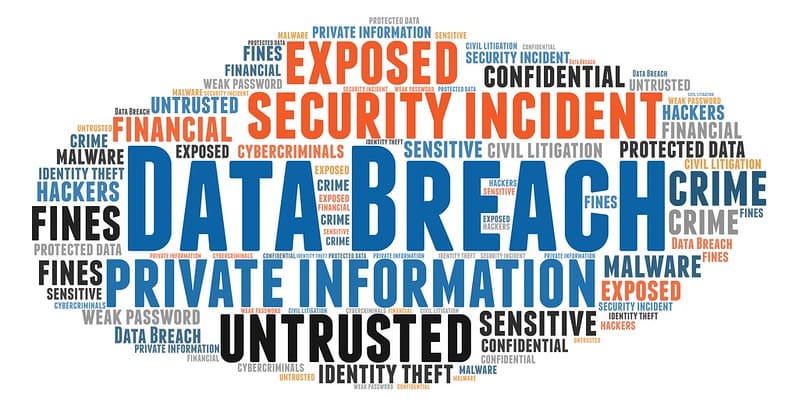![]()
What Is DLP and How Does It Work?
Since data breaches and leaks are always a risk, data loss prevention (DLP) has become an important protection tool that keeps companies safe. But, what does DLP mean and how does it work?
DLP is an all-around plan that uses technology, processes, and people to find, sort, and keep safe private data. As a digital watchdog, it constantly watches and analyzes how data moves through email, cloud storage, and endpoint devices, among other places.
The fact that data breaches are becoming more common shows how important DLP is. The 2023 Data Breach Report from the Identity Theft Resource Center says that a record 338.6 million records were exposed in 1,862 data breaches just in the first half of 2023. DLP is very important for lowering these risks because it finds and stops unauthorized data exchanges before they happen.
What does DLP do to make this possible?
Several different methods are used in DLP solutions, such as
- Content inspection: DLP uses rules and terms that have already been set up to search data streams for sensitive information. This could include things like social security numbers, credit card numbers, or intellectual property.
- Contextual analysis: DLP does more than just match keywords; it also looks at how data moves in its surroundings. For instance, it can spot attempts to send private papers to people who aren’t supposed to have them.
- Data fingerprinting: DLP can keep an eye on certain data files even if they are changed or renamed, making sure they aren’t sent through channels that aren’t allowed.
DLP systems give businesses several important benefits by using these methods:
- Lower risk of data breaches: DLP stops data leaks before they happen, whether they happen by chance or on purpose.
- Better compliance with regulations: DLP helps businesses follow data privacy laws like GDPR and CCPA by making sure that sensitive data is treated in a way that meets compliance standards.
- Better visibility of data: DLP gives organizations useful information about how data is used, which helps them make better decisions about how to manage data.
In our data-driven world, DLP is a very useful tool. Organizations can protect their sensitive information and build a strong cybersecurity posture by knowing what it can do and how it works.
Important Tips for Putting Data Loss Prevention (DLP) Plans Into Action That Work Starting a Strong DLP Deployment:
Find the most important data
It is very important to understand that not all knowledge is equal in importance. Every business needs to figure out what its “critical” data is—info that if lost or stolen could cause big problems. Start your DLP plan by focusing on the data that is the most important or likely to be stolen.
Classification of Data
To organize data based on its context, use a simple, scalable way. This is done by putting data into groups based on its source program, storage location, or the person who created it. Use permanent classification tags to make it easy to keep track of how data is being used. These patterns often come with pre-set rules for following PCI and PII standards.
Identifying Vulnerabilities in Data
Know the different risks that data faces, especially when it is sent between devices or shared with partners, users, and people in the supply chain. When data is used on sites, like when it’s attached to an email or sent to external storage, it’s especially at risk. A good DLP plan needs to take into account how data moves and when it is most vulnerable.
Keeping an eye on data in transit
It is very important to understand how data is used and spot habits that could be dangerous. Watching data moves gives you information about how private data is being handled and helps you figure out how big of a problem a DLP plan needs to solve.
Collaboration and Implementation of Control
In the next step, you’ll work with department heads to figure out what data risks are and how to reduce them. At first, controls on data use might be simple, focusing on habits that everyone agrees are unsafe. More specific and fine-tuned controls can be added to deal with certain risks as the DLP effort grows.
Teaching employees and giving them ongoing support
A key way to reduce unintentional insider threats is to teach workers about the effects of moving data. Being aware can greatly lower the number of times info is lost. These days, DLP solutions warn users when they’re about to do something that might break the rules or make things more dangerous. This helps apply controls against bad data practices.
Adding to the program
Companies may decide to go back and add to these steps to include more data or make the processes of identification and classification better to get better control. Focusing on protecting key pieces of data first makes DLP easier to handle and gives you a base for growing the program.
How does Data Loss Prevention (DLP) work?
The goal of content awareness is to look deeper into the content with the knowledge that its context can make it more important, but that importance is not limited to any one part of the context.
After accessing the information, different analysis methods are used to look for possible policy violations:
Rule-Based/Regular Expressions: This is a popular way to check content against patterns like credit card or social security numbers. It works quickly and can be set up in different ways, but it might give false results if it doesn’t do extra checks to make sure the pattern is real.
Database Fingerprinting (Exact Data Matching): This method checks data against exact database records, whether the data comes from a static dump or a live connection. This method works best for organized data, but it might slow down the system because it needs a lot of processing power.
Exact File Matching: This method matches file hashes with known fingerprints instead of looking at the contents of the files. It’s very good at finding specific files, but not so good at finding files that are close but not the same.
Partial Document Matching: Looks for exact or nearly exact matches in documents. This can help you find different copies of a form that was filled out by different people.
Conceptual/Lexicon: Uses both dictionaries and rules to find complicated, unstructured ideas that are hard to put into easy groups. This method needs to be changed to work with each DLP system.
Statistical Analysis: This method uses machine learning and statistical methods such as Bayesian analysis to find policy violations. It works, but it needs a big collection to analyze so that false results are kept to a minimum.
Pre-built Categories: These have rules and dictionaries that are already made to protect common types of secret information, like PCI data or health information that must be kept private under HIPAA rules.
By using these different methods, DLP systems offer strong protection against data leaks, keeping sensitive information safe in a company’s digital world.
Conclusion
Data Loss Prevention (DLP) is an important tool for protection because it keeps private data safe from people who shouldn’t have access to it or from being stolen. Defensible language protection (DLP) keeps sensitive information safe inside the company by watching, recognizing, and responding to how data is handled and sent across the network. Its strategy is multifaceted, combining technology, policies, and processes to provide a strong defense against threats from outside and weaknesses within the organization. In a world that is becoming more and more data-driven, businesses need to understand and use DLP to protect their intellectual property, stay in line with regulations, and keep their good name.



